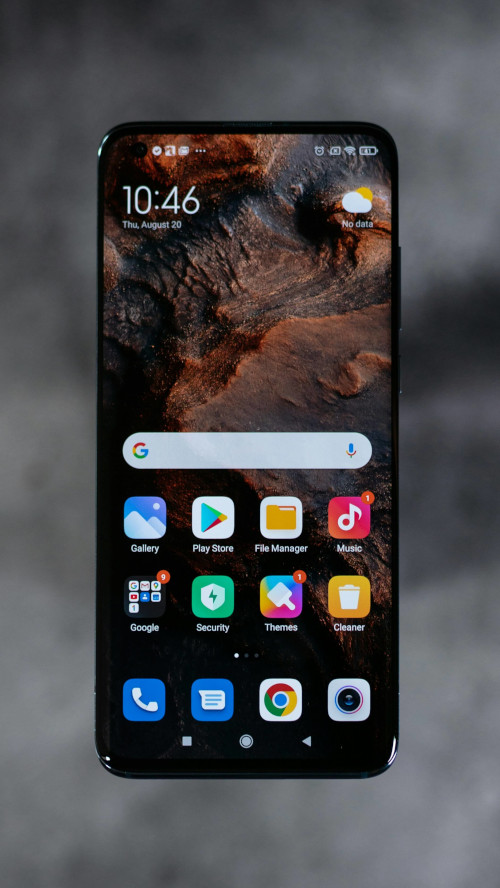
Mastering Mobile Presence
by Gideon van der Merwe
November 09, 2023
In the dynamic realm of digital evolution, fostering a robust mobile presence is pivotal for global businesses. This comprehensive guide delves into the intricacies of mobile development, focusing on the dynamic duo of Progressive Web Apps (PWAs) and native mobile applications. Throughout this extensive exploration, we’ll uncover the unique advantages of each strategy, crucial considerations, and unveil why SMEs should prioritize mobile applications.

Introduction
As mobile devices redefine user interactions, businesses must navigate the diverse landscape of mobile development. This article aims to provide a comprehensive understanding of two prominent strategies: Progressive Web Apps (PWAs) and native mobile applications. Whether you’re based in South Africa or anywhere globally, Webbest, headquartered in Pretoria, is ready to assist. Reach out to us at [email protected] for tailored discussions or project inquiries.
Section 1: Navigating the Dynamic Mobile Development Landscape
The mobile development landscape has undergone transformative changes, offering businesses an array of choices. From native development for Android and iOS to the efficiency of cross-platform frameworks, understanding these options is crucial for making strategic decisions.
Section 2: Unveiling the Power of Flutter
Introduction to Flutter
Flutter, Google’s versatile cross-platform framework, emerges as a powerful tool for crafting mobile applications. With its ability to create a unified codebase for Android and iOS, Flutter provides businesses with a compelling solution.
Advantages of Harnessing Flutter
- Cost-Efficiency: Streamlining costs by eliminating the need for separate codebases.
- Expedited Development: Leveraging the hot reload feature for swift iterations.
Exemplary Flutter Applications
- Reflectly: A notable journaling app showcasing Flutter’s capacity for a refined user experience.
- Hamilton: An app for the hit musical, demonstrating Flutter’s versatility in creating captivating interfaces.
Section 3: Native Development: A Stalwart Approach
While cross-platform frameworks offer advantages, traditional native development for Android and iOS remains a robust option. The decision hinges on factors such as the target audience, market preferences, and the intricacy of the application.
Pros and Cons of Native Development
- Pros:
- Optimized Performance: Finely tuned for each platform, ensuring peak performance.
- Leverage Platform-Specific Features: Seamless integration of features unique to each platform.
- Cons:
- Extended Development Time: Crafting separate codebases may extend the development timeline.
- Elevated Maintenance Costs: Managing distinct codebases escalates maintenance efforts.
Section 4: Progressive Web Apps: Bridging the Gap
Embracing Progressive Web Apps
Progressive Web Apps (PWAs) offer a hybrid solution, amalgamating the best features of web and mobile applications. PWAs deliver enhanced user experiences, offline capabilities, and the convenience of installation directly from a web browser.
Benefits of PWAs
- Offline Accessibility: Seamless offline functionality ensures users can access crucial features without a stable internet connection.
- Elevated User Experience: PWAs provide a seamless and responsive user experience, fostering increased engagement.

Section 5: Strategic Considerations in Mobile Development
Keyword Integration and Backlinks
To enhance search engine visibility, integrate keywords such as “mobile development strategies,” “Flutter benefits,” “Android innovation,” and “iOS sophistication.” Elevate the article’s authority by incorporating backlinks to reputable sources like Google Developers, Smashing Magazine, TechCrunch, Stack Overflow, and CSS-Tricks, known for their high ranking score and expertise in the field.
Related Articles:
3 Crucial Reasons for an SME to Invest in Mobile Applications:
- Enhanced User Engagement: Mobile apps provide a direct and engaging channel for users to interact with your brand.
- Streamlined Customer Communication: Establish direct communication channels, enhancing customer support and feedback loops.
- Brand Visibility and Recognition: Mobile apps contribute to increased brand visibility, fostering stronger brand recognition.
Section 6: Crafting a Mobile Strategy for Global Impact
In crafting a mobile strategy, businesses must consider their unique goals, target audience, and the nature of their products or services. By aligning mobile development efforts with overarching business objectives, organizations can harness the full potential of mobile applications.
Section 7: Future Trends in Mobile Development
The mobile development landscape is ever-evolving, and staying ahead of emerging trends is crucial for sustained success. Explore future-oriented technologies, such as augmented reality (AR), artificial intelligence (AI), and blockchain, to anticipate and prepare for upcoming shifts in the mobile space.
Conclusion
As we conclude this exploration into mobile excellence, it’s evident that the world of mobile development offers a spectrum of possibilities. Whether opting for the versatility of Flutter, the robustness of native development, or the hybrid approach with PWAs, businesses can leverage these strategies to propel their global impact.
For SMEs considering the leap into mobile applications, the advantages are clear. From enhanced user engagement to streamlined communication and brand recognition, investing in a mobile app can be a transformative step towards digital success.
Feel free to explore the provided resources and related articles for deeper insights. If you have questions, seek further clarification, or are ready to embark on your mobile journey, Webbest is here to guide you. Reach out to us at [email protected] for consultations and discussions tailored to your unique needs. Your journey to mobile excellence starts here.
Back Cookie Notice
Cookie Notice Cookie settings
Cookie settings
Chat with us
Facebook Whatsapp Whatsapp